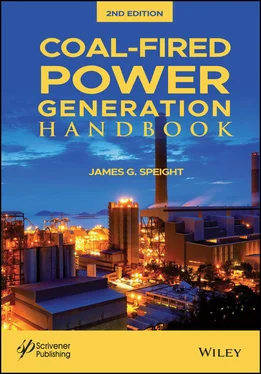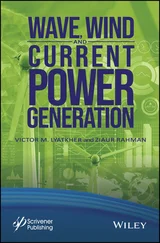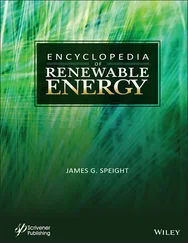1 Cover
2 Title Page
3 Copyright
4 Preface
5 PART I: ORIGIN AND PROPERTIES 1 History, Occurrence, and Resources1.1 Introduction 1.2 Origin of Coal 1.3 Occurrence 1.4 Coal Utilization and Coal Types 1.5 Resources 1.6 Reserves 1.7 Energy Independence References 2 Classification2.1 Introduction 2.2 Nomenclature of Coal 2.3 Classification Systems 2.4 Coal Petrography 2.5 Correlation of the Various Systems References 3 Recovery, Preparation, and Transportation3.1 Introduction 3.2 Coal Recovery 3.3 Coal Preparation 3.4 Size Reduction 3.5 Coal Cleaning 3.6 Coal Drying 3.7 Desulfurization 3.8 Transportation References 4 Storage4.1 Introduction 4.2 Stockpiling 4.3 Effect of Storage 4.4 Spontaneous Ignition 4.5 Mechanism of Spontaneous Ignition 4.6 Preventing Spontaneous Ignition References 5 General Properties5.1 Introduction 5.2 Sampling 5.3 Proximate Analysis 5.4 Ultimate Analysis 5.5 Calorific Value 5.6 Reporting Coal Analyses References 6 Physical, Mechanical, Thermal, and Electrical Properties6.1 Introduction 6.2 Physical Properties 6.3 Mechanical Properties 6.4 Thermal Properties 6.5 Electrical Properties 6.6 Epilog References
6 PART II: POWER GENERATION 7 Combustion7.1 Introduction 7.2 General Aspects 7.3 Chemistry and Physics 7.4 Catalytic Combustion 7.5 Fuels References 8 Combustion Systems8.1 Introduction 8.2 Combustion Systems 8.3 Fuel Feeders References 9 Gasification9.1 Introduction 9.2 General Aspects 9.3 Chemistry and Physics 9.4 Catalytic Gasification 9.5 Plasma Gasification 9.6 Gaseous Products 9.7 Underground Gasification References 10 Gasification Systems10.1 Introduction 10.2 Gasifier Types 10.3 Fixed-Bed Processes 10.4 Fluidized-Bed Processes 10.5 Entrained-Bed Processes 10.6 Molten Salt Processes 10.7 Other Designs 10.8 Gasifier-Feedstock Compatibility 10.9 Energy Balance and Other Design Options 10.10 Underground Gasification References 11 Electric Power Generation11.1 Introduction 11.2 Electricity From Coal 11.3 Steam Generation 11.4 Control of Emissions 11.5 Power Plant Efficiency 11.6 Combined Cycle Generation References 12 Gas Cleaning12.1 Introduction 12.2 General Aspects 12.3 Air Pollution Control Devices 12.4 Particulate Matter Removal 12.5 Acid Gas Removal 12.6 Removal of Sulfur-Containing Gases 12.7 Removal of Nitrogen-Containing Gases 12.8 Environmental Legislation References 13 Clean Coal Technologies for Power Generation13.1 Introduction 13.2 Historical Perspectives 13.3 Modern Perspectives 13.4 Clean Coal Technology 13.5 Managing Wastes from Coal Use 13.6 Carbon Dioxide Capture and Sequestration References 14 Environmental Issues14.1 Introduction 14.2 Coal Preparation 14.3 Transportation and Storage 14.4 Combustion 14.5 Gasification 14.6 Power Plant Waste 14.7 The Future References
7 PART III: ALTERNATIVE FEEDSTOCKS AND ENERGY SECURITY 15 Alternate Feedstocks15.1 Introduction 15.2 Viscous Feedstocks 15.3 Biomass 15.4 Waste References 16 Combustion of Alternate Feedstocks16.1 Introduction 16.2 Viscous Feedstocks 16.3 Biomass 16.4 Solid Waste References 17 Gasification of Alternate Feedstocks17.1 Introduction 17.2 Viscous Feedstocks 17.3 Biomass 17.4 Solid Waste 17.5 Process Products References 18 Coal and Energy Security18.1 Introduction 18.2 Energy Security 18.3 The Future of Coal 18.4 Sustainable Development References
8 Common Conversion Factors used in Coal Technology
9 Glossary
10 Index
11 About the Author
12 End User License Agreement
1 Chapter 1Figure 1.1 Schematic showing tendency of coal rank to increase with depth of bur...Figure 1.2 Coal types and distribution in the United States.Figure 1.3 Distribution of Sulfur content of US Coals (Energy information Admini...Figure 1.4 Energy Resources of the Earth (Speight, 2013).Figure 1.5 Resource and reserve terminology (Speight, 2013).
2 Chapter 2Figure 2.1 Coal reserves and distribution in the United States (DOE/EIA, 1995).Figure 2.2 Classification by the Seyler System.Figure 2.3 Classification of the various hydrocarbon and hydrocarbon-producing r...Figure 2.4 Comparison of class number (International System) with ASTM classific...
3 Chapter 3Figure 3.1 General layout of a coal preparation/coal cleaning plant (Speight, 20...Figure 3.2 A dense-medium separation method (Speight, 2013).Figure 3.3 The chance sand flotation process (Speight, 2013).Figure 3.4 Cyclone separation (Speight, 2013).
4 Chapter 5Figure 5.1 Data types obtained from (a) Proximate Analysis and (b) Ultimate Anal...Figure 5.2 Reaction of minerals during coal heating (Speight, 2013).Figure 5.3 General relationship carbon and hydrogen content to rank (Speight, 20...Figure 5.4 Proximate analysis and coal rank (ASTM, 2011).Figure 5.5 Calorific value and coal rank (ASTM 2011).Figure 5.6 Illustration of the various segments of coal analysis (Ward, 1984). C...
5 Chapter 6Figure 6.1 Schematic representation of a coal-fired power plant.Figure 6.2 Variation of coal density with carbon content (Berkowitz, 1979).Figure 6.3 Variation of porosity with carbon content (Berkowitz, 1979).Figure 6.4 Variation of pore distribution with carbon content (Berkowitz, 1979)Figure 6.5 Variation of coal strength with volatile matter yield (Brown and Hior...Figure 6.6 Variation of the Hardgrove grindability index with volatile matter yi...
6 Chapter 7Figure 7.1 Changes occurring to the mineral matter during coal combustion (Reid,...Figure 7.2 Relationship of burning time to particle size (Speight, 2013).Figure 7.3 H/C-O/C diagram (Van Krevelen, D.W. 1950. Graphical-Statistical Metho...
7 Chapter 8Figure 8.1 A Chain-grate stoker (Speight, 2013).Figure 8.2 Combustion process occurring in a solid fuel bed.Figure 8.3 An under-feed stoker (Speight, 2013).Figure 8.4 Schematic comparison of (a) a bubbling fluidized-bed reactor and (b) ...Figure 8.5 A Fluidized-Bed Combustor (Speight, 2013).Figure 8.6 Illustration of the fluidized-bed concept: (a) Gas velocity less than...Figure 8.7 A pressurized fluidized-bed combustor (Speight, 2013).Figure 8.8 The Integrated Gasification Combined Cycle (IGCC) process (Speight, 2...Figure 8.9 A Cyclone Furnace (Speight, 2013).Figure 8.10 A Magnetohydrodynamic Generator (Speight, 2013).
8 Chapter 9Figure 9.1 Uses of the various gaseous products from coal.Figure 9.2 Variation of gas composition and heating value with pressure (Baughma...Figure 9.3 General chemistry of the various gasification systems.
9 Chapter 10Figure 10.1 The principal types of gasifiers.Figure 10.2 The Foster-Wheeler stoic gasifier.Figure 10.3 A slagging Lurgi gasifier.Figure 10.4 A Wellman-Galusha gasifier.Figure 10.5 An agitated Wellman-Galusha gasifier.Figure 10.6 A Woodall-Duckham gasifier.Figure 10.7 The agglomerating burner process.Figure 10.8 The carbon dioxide acceptor process.Figure 10.9 The Coalcon process.Figure 10.10 The COED/COGAS process.Figure 10.11 The Exxon Catalytic Gasification process.Figure 10.12 The Hydrane process.Figure 10.13 The Hygas process.Figure 10.14 The Pressurized Fluid Bed.Figure 10.15 The Synthane process.Figure 10.16 The U-Gas process.Figure 10.17 The Winkler process.Figure 10.18 The Bi-Gas process.Figure 10.19 The Combustion Engineering process.Figure 10.20 A Koppers-Totzek Gasifier.Figure 10.21 Texaco process.Figure 10.22 The Atgas process.Figure 10.23 Pullman-Kellogg process.Figure 10.24 Rockgas process.Figure 10.26 The Borehole Producer Method (Braunstein et al ., 1977).Figure 10.27 The Chamber Method (Braunstein et al ., 1977).Figure 10.28 The Shaftless Method (Percolation Method) – (a) Section through Bor...Figure 10.29 The Stream Method Gasification (Braunstein et al ., 1977).
10 Chapter 11Figure 11.1 Schematic for a typical coal-fired power plant based on coal combust...Figure 11.2 A steam turbine for electricity generation.Figure 11.3 Schematic of an IGCC power plant.
Читать дальше












